Theresa Smith's Blog, page 51
July 19, 2021
Book Review: Say Nothing: A True Story Of Murder and Memory In Northern Ireland by Patrick Radden Keefe
WINNER OF THE ORWELL PRIZE FOR POLITICAL WRITING 2019
A BARACK OBAMA BEST BOOK OF 2019
SHORTLISTED FOR THE NATIONAL BOOK AWARD FOR NONFICTION 2019
TIME’s #1 Best Nonfiction Book of 2019
A NEW YORK TIMES BESTSELLER
One night in December 1972, Jean McConville, a mother of ten, was abducted from her home in Belfast and never seen alive again. Her disappearance would haunt her orphaned children, the perpetrators of the brutal crime and a whole society in Northern Ireland for decades.
Through the unsolved case of Jean McConville’s abduction, Patrick Radden Keefe tells the larger story of the Troubles, investigating Dolours Price, the first woman to join the IRA, who bombed the Old Bailey; Gerry Adams, the politician who helped end the fighting but denied his IRA past; and Brendan Hughes, an IRA commander who broke their code of silence. A gripping story forensically reported, Say Nothing explores the extremes people will go to for an ideal, and the way societies mend – or don’t – after long and bloody conflict.
Published by HarperCollins GB
Released September 2019
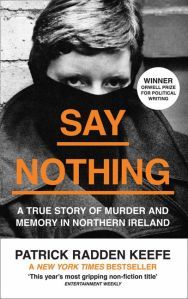 My Thoughts:
My Thoughts:
‘For a group with an alarming tendency to kill people by accident, the IRA had an elaborate internal mechanism for determining whether to kill people on purpose.’
This is honestly more of a book recommendation than a proper review. While I’m not the most prolific reader of non-fiction, I do read my fair share, particularly on topics of interest. Say Nothing is hands down the best non-fiction book I’ve ever read. Written in the style of narrative non-fiction, you would be forgiven for thinking at times you were reading a crime thriller. It’s just that well written and that captivating.
‘Tranquilliser use was higher in Northern Ireland than anywhere else in the United Kingdom. In some later era, the condition would probably be described as post-traumatic stress, but one contemporary book called it ‘the Belfast syndrome’, a malady that was said to result from ‘living with constant terror, where the enemy is not easily identifiable and the violence is indiscriminate and arbitrary’.
One thing that I was reminded of over and over whilst reading this book was the modernity of it. This is not history. People who are the same age as my father were involved in the initial conflict during the 1970s. I remember bombings from the 1990s. Brexit is touched on towards the end. This situation in Northern Ireland may not be what it once was, but it isn’t yet what it should be.
‘The presence of the gun in Irish politics is not the sole responsibility of the Irish. The British were responsible for putting it there in the first place and they continue to use it to stay in Ireland.’ – GERRY ADAMS
Patrick Radden Keefe is a terrific writer and the 100 pages of notes and sources at the end of the book attest to his meticulous attention to detail when researching and writing Say Nothing. The only perspective of depth that is missing is the loyalist one but he addresses the why and what of this and directs readers onwards if they are seeking further reading. Nothing is ever so simple as black or white, good or evil, and I appreciated the empathy this book was written with. I felt a great deal of sympathy for those who volunteered for the IRA and then later felt sold out. Their reasoning made a lot of sense. That doesn’t mean I favour terrorism, it just means I understand and also have empathy for the initial motivation and the later situations these people found themselves in.
‘The Belfast Project, as it became known, seemed to address an obvious shortcoming in the Good Friday Agreement. In their effort to bring about peace, the negotiators had focused on the future rather than the past. The accord provided for the release of paramilitary prisoners, many of whom had committed atrocious acts of violence. But there was no provision for the creation of any sort of truth-and-reconciliation mechanism that might allow the people of Northern Ireland to address the sometimes murky and often painful history of what had befallen their country over the previous three decades.’
‘To Hughes, Good Friday had symbolised the ultimate concession: formal acceptance by the republican movement that the British would remain in Ireland. Hughes had killed people. He had done so with the conviction that he was fighting for a united Ireland. But it now became clear to him that the leadership of the movement may have been prepared to settle for less than absolute victory and had elected – deliberately, in his view – not to inform soldiers like him.’
The striking cover image is of Dolours Price when she was photographed for the Italian magazine L’Europeo on a trip to Italy to raise funds for the Catholic cause during the 1970s. The Troubles have been explored and interpreted through popular culture from the 1970s onwards. Music, poetry, novels and non-fiction books (particularly memoirs), movies and television series. I have watched, read and listened to a lot since my early 20s. I’ll reiterate again that Say Nothing is outstanding, an incredible piece of political writing that is comprehensive, compelling, empathetic, and challenging, leaving the reader with much to contemplate.





I first heard of this book over at Books Are My Favourite and Best.
July 18, 2021
The Week That Was…
Joke of the week:
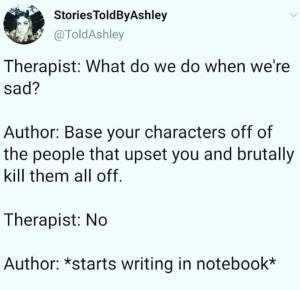
~~***~~
What I’ve been watching:
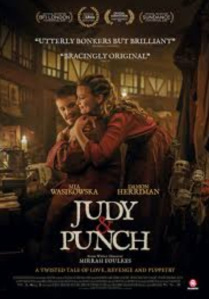
I’d been wanting to see Judy & Punch right from when I saw the first preview for it but it was never screened in the cinema where I lived. It’s streaming on Stan now so I finally got to watch it. Very good! An Australian production too. It’s very dark, the sort of humour I enjoy most.
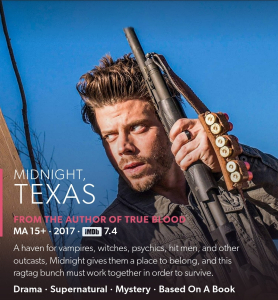
I’m one season into this adaptation of the Midnight, Texas book series by Charlaine Harris (of True Blood fame). They only made two seasons, so halfway through. I’m quite enjoying it.

This one popped up on Stan on Friday. I watched the first episode and am keen to get into the rest. It makes you realise how vulnerable you are when you need surgery.
~~***~~
Pretty purchases:
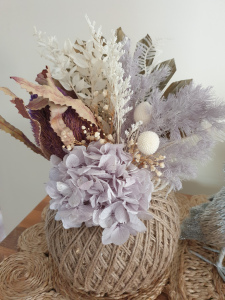
Handmade locally, I couldn’t resist!
~~***~~
What I’ve been reading:
Some of my reading this week crossed over from last week. The Good Wife of Bath was quite long so I was still reading that until almost mid-week. The First Time I Thought I Was Dying is an essay collection so I was reading that over breakfast, one essay at a time.
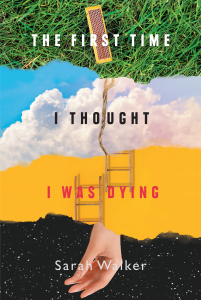
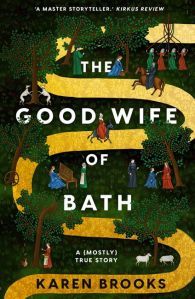

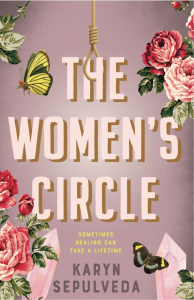
~~***~~~
Until next week… 


July 15, 2021
Book Review: The Good Wife of Bath A (Mostly) True Story by Karen Brooks
In the middle ages, a poet told a story that mocked a strong woman. It became a literary classic. But what if the woman in question had a chance to tell her own version? Who would you believe?
England, The Year of Our Lord, 1364
When married off aged 12 to an elderly farmer, Eleanor Cornfed, who’s constantly told to seek redemption for her many sins, quickly realises it won’t matter what she says or does, God is not on her side – or any poor woman’s for that matter.
But Eleanor was born under the joint signs of Venus and Mars. Both a lover and a fighter, she will not bow meekly to fate. Even if five marriages, several pilgrimages, many lovers, violence, mayhem and wildly divergent fortunes (that swoop up and down as if spinning on Fortuna’s Wheel itself) do not for a peaceful life make.
Aided and abetted by her trusty god-sibling Alyson, the counsel of one Geoffrey Chaucer, and a good head for business, Eleanor fights to protect those she loves from the vagaries of life, the character deficits of her many husbands, the brutalities of medieval England and her own fatal flaw… a lusty appreciation of mankind. All while continuing to pursue the one thing all women want – control of their own lives.
This funny, picaresque, clever retelling of Chaucer’s ‘Wife of Bath’ from The Canterbury Tales is a cutting assessment of what happens when male power is left to run unchecked, as well as a recasting of a literary classic that gives a maligned character her own voice, and allows her to tell her own (mostly) true story.
Published by HQ Fiction AU
Released 7th July 2021
 My Thoughts:
My Thoughts:Thoroughly entertaining, The Good Wife of Bath is a retelling of sorts, of Chaucer’s ‘Wife of Bath’ from The Canterbury Tales. Now, I have never read any part of The Canterbury Tales, much less the wife’s tale, so I can’t comment on this novel in relation to Chaucer’s original work. However, Karen Brooks does pay homage to the Wife of Bath, and Chaucer himself, within this novel and I feel I was given much insight into the original verse as well as the author himself through the pages of this story. In other words, I got the gist.
I am quite a fan of Karen Brooks. Her attention to detail and immersive writing is the fine wine of historical fiction. The research that her narrative rests on is phenomenal, there is literally no stone left unturned and she even nails the dialogue and language of her era with such authenticity. Set in the Middle Ages, there was so much about daily life I was completely ignorant to. But she also weaves in the bigger things: changes to kings, uprisings, plagues, trade, commerce, social conventions and all manner of mores; really, in terms of recreating an historical period, this novel is brilliant.
‘If I continued to burden myself with guilt, then Jankin wins – they all do.’
‘Who, mistress?’ she asked quietly.
‘The men who continue to make us women pay for their sins; who have done so since Eve offered the apple to Adam. But –’ I twisted around in the tub so I could look Milda in the face. ‘Remember Mistress Ibbot? Wace’s midwife? She said – and I’ve always thought – Eve didn’t make him eat the bloody fruit. She offered Adam a choice and he made one. So whose sin is it really? Who is really responsible for the Fall of mankind? Is it her or him? Or are they both equally culpable?’
The beating heart of The Good Wife of Bath though is its focus on women’s agency, particularly that of wives, because let’s face it, that’s pretty much all you were going to get to be. By giving her main character five very different marriages, we as readers were treated to a varied experience. We got to see, not only what it would have been like to be a wife of the Middle Ages, but also the restrictions that crossed class as our main character moved up the social ladder with each new union. Basically, when it came to marriage, you were damned if you did and damned if you didn’t. And in the end, social class did not dictate what sort of marriage (or man) you would be getting, despite the material comforts wealth offered.
‘I always enjoy placing women back into history, demonstrating, albeit through researched fiction, that while they may not be recorded or remembered in the same way as their male counterparts, they were there. Herstory happened too. The omission of women from history doesn’t mean they didn’t live it, nor that they didn’t influence it. But just as we forget that to our detriment, so too it’s a mistake to think women fighting for their rights is exclusive to contemporary times. Many women have, over time, fought to be recognised as more than simply walking wombs, the ‘weaker vessel’, good only for sating men’s desires, ‘feeble-minded’ penis-less poor copies of men, responsible for the Fall, men’s inability to control their urges, and so much more. What’s true about the past is that women didn’t have the freedoms, education or ability to fight for their rights the way we continue to today.’ – AUTHOR NOTE
The narration of this novel makes for a highly entertaining read. It is above all a comedy, but there are throughout significant moments of heartbreak. Towards the end, the novel does bear down a bit under its own weight, and I have to be honest, I wasn’t too keen on the trade our main character settled into once she moved to London. It just felt…inevitable in a way I wish the author had resisted. Still, The Good Wife of Bath was a superb read, a real treat for fans of historical fiction, particularly those who like a good long saga to sink into.




Thanks to the publisher for the review copy.
July 13, 2021
Book Review: Circus of Wonders by Elizabeth Macneal
It is 1865 and in a coastal village in southern England, Nell picks violets for a living. Set apart from her community because of the birthmarks that pepper her skin, Nell keeps her head down and her sights small: her world is her beloved brother and devotion to the sea.
Then, Jasper Jupiter’s Circus of Wonders arrives on the outskirts of the village. Nell keeps her distance, but the night after the circus has apparently left, she is kidnapped. Her father has sold her, promising Jasper Jupiter his very own leopard girl. It is the greatest betrayal of Nell’s life, but as she comes to know the other performers and Jasper’s quieter, gentler brother Toby, Nell begins to wonder if becoming part of the Circus of Wonders is the best thing that has ever happened to her.
Toby has always stuck to his brother’s side: the shadow to his brother’s luminous light. When Jasper served in the Crimean War, Toby followed with his camera, and they share a secret – hidden amongst the carnage of those battlefields – which binds them together.
But Toby is captivated by Nell. She has become Nellie Moon, the star of Jasper’s show. In London she is written up in the papers as the eighth wonder of the world, figurines are cast in her image, and crowds rush to watch her soar through the air.
But who gets to tell Nell’s story? And as she falls in love with Toby, can they plot their escape? As the world Jasper has created threatens to crash to the ground around him, Toby must decide where – finally – his loyalty lies.
This is a novel with a vivid, brilliant cast of characters and themes of creativity and ownership, beauty and power, success and crashing failure, and the Victorian obsession with spectacle.
Published by
Picador
Released 11th May 2021
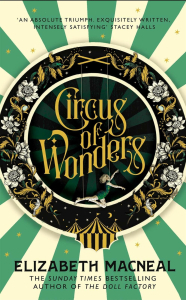 My Thoughts:
My Thoughts:Those who have been with me for a while now will know that I love novels about the circus. You’ll also know that the Victorian era is one of my favourites to read about in historical fiction. So, imagine my delight upon discovering that one of my favourite authors has released a novel about the circuses of the Victorian era. I know! It’s like she’d written it just for me. Once again, Elizabeth Macneal offers us a Victorian London that throbs with atmosphere: the grime, the poverty, the depravity, the desperation; all of it pasted over with a transient glamour.
‘By the 1860s, the Victorian freak show, which traded physical difference as a form of entertainment, was booming. ‘Deformito-mania’, as Punch dubbed it, swept the globe with an unabated fury. Queen Victoria, dubbed the ‘freak fancier’, was the industry’s biggest fan and helped to popularize it, entertaining countless ‘human wonders’ and showmen in Buckingham Palace. For the performers themselves, the industry might have offered some opportunity and freedom, but it could also take it away with devastating effect.
Circus of Wonders is, among many things, a book about storytelling. There are no simple answers, no easy ways of reading a deeply complex and problematic piece of history. I wanted merely to highlight how this industry could both exploit and empower.’
– Author note.
The story is narrated alternately between Nell, aka Nellie Moon, the rising star of Jasper Jupiter’s Circus of Wonders, Jasper himself, and his brother Toby. There are other cast members who we get to know vividly through these perspectives: Stella, the bearded woman; Pearl, the albino child; Brunette, the giantess; Dash, Jasper’s best friend and Stella’s love, who died in the Crimean War and whose death binds Toby to Jasper with a sinking obligation. Even minor players come across as fully fleshed out and authentic. Characterisation, along with setting, combines to give us an authentic reading experience, the closest we can get to stepping back through time.
‘In this age of wonder, epiphanies are born in the ecstasies of dreams and fevers. Mary Shelley dreamed up Frankenstein. Alfred Russel Wallace conceived the theory of natural selection while raving with fever. Keats and Coleridge birthed their greatest works in the throes of opium. And now, he, Jasper Jupiter, has settled on the invention which will immortalize him. He will tell this story for years to come, the tinderbox moment when the idea struck him. He has the answer; he knows he has it. This is what will set him apart. This is what will make him. He dips his quill into a brimming inkpot and his vision sharpens.’
Circus of Wonders was to me not just the story of the performers. It was also the story of the greed and craving for fame that underpinned the showmen. When Jasper revealed his show with Nellie Moon as the star, his success was instant, he was the envy of other showmen and the money just started rolling in. But his ego got in the way, and an interesting notion was revealed: was Jasper driven by money or fame? He had money, more than enough coming in to finance his venture, yet once the star of his show became more famous than he, it was as though he became the agent of his own destruction, completely blinded to reality. That slipping and unravelling of his mind was conveyed with such captivating brilliance; I feared for the performers, at the mercy of such an imbalanced mind, but I feared for Jasper as well, who was totally destroying himself swiftly and permanently.
‘He has lost control of his story, has watched as it has spun and built and gathered without him in it, no longer about him but her. Everywhere he turns, she is there. Her name, in the courtier’s mouth. Her bite and kick, her refusal to submit to him. And then, that light glimmering in Toby’s wagon. He stumbled towards it, and there they were.’
Toby was my favourite character, underestimated as Jasper’s shadow, seemingly only there to do his bidding. But Toby was a complex man, bound to his brother like a twin, this bond was not entirely of Toby’s making; Jasper himself was unable to live without his brother in his shadow, he couldn’t envisage running the circus without him, he even dragged Toby to the battlefields of the Crimean War just so that he could have him there. The bond between these brothers was forged upon many emotions, some of it manipulated by Jasper, some of it orchestrated by Toby’s adulation, but most of it was born out of genuine feeling. Their relationship demonstrated the complexity of siblings, the love balanced with obligation, the genuine feeling of attachment you can have that never eases. Nell had this with her brother Charlie too, but her desire for the circus life led to her cutting free from that bond in a way that Toby and Jasper were unable to.
‘Circus has always made him believe that anything is possible. But he knows, too, that it is an illusion, that life does not share its boldness, its neat stories.’
Nell was such a great character. I felt as though the author articulated what it must be like to astound audiences whilst still feeling their revulsion. People like Nell were not regarded as human beings. They were spectacles to gawk at, to touch, to collect. As performers, they gained a small measure of power, offset though by the whims of the crowds and forever at the mercy of their showmen. The love story between Nell and Toby was so beautiful, and while on the one hand, I longed for Toby’s dream to come true, on the other, I could intimately understand why Nell felt she needed the circus. The way this all played out was empowering, as women in particular were more vulnerable to ownership by their showmen, just as they have always been at the mercy of the whims of men all through history. The feminist undercurrent throughout this novel was subtle, but powerful nonetheless.
I adored The Doll Factory, Elizabeth Macneal’s debut and previous release. I loved Circus of Wonders equally as much. The two novels are linked in style yet vastly different, the mark of a great author. Circus of Wonders was sublime, unforgettable historical fiction that will delight and horrify in equal measure – the imbalance of power coupled with the heady desire of fame; humanity at its most gratuitous unspooling against a fickle Victorian London backdrop. Be still, my beating heart. Seriously, it doesn’t get better than this.





July 11, 2021
Book Review: The Husbands by Chandler Baker
Welcome to the neighbourhood. We do things differently here.
Recently, Nora has started to feel that ‘having it all’ – a family, a soon-to-be new house, a successful career in law – comes with a price, one her husband doesn’t seem to be paying quite so heavily. She loves Hayden, but why is it that, however hard men work, their wives always seem to work that much harder?
Then her house-hunting takes them to an affluent suburban neighbourhood and Nora’s eyes are opened to a new world. One where women can have it all. One where the men actually pull their weight.
But a wrongful death case involving one of the local residents draws Nora further into this perfect world and she begins to realise that the secret of ‘having it all’ is far more complicated than she could ever have imagined. In fact, it may be worth killing for…
Smart, sharp and timely, The Husbands imagines a world where the burden of the ‘second shift’ is equally shared – and what it might take to get there. If you love the novels of Liane Moriarty, Celeste Ng and Sally Hepworth you will devour The Husbands.
Published by Hachette Australia
Released 30th June 2021
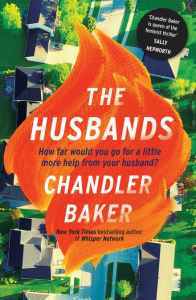 My Thoughts:
My Thoughts:Darkly funny with a disturbing undercurrent, The Husbands is a classic tale of ‘be careful what you wish for’. Nora is juggling a career, motherhood, being a wife and running a household. Her husband helps out when he’s asked, but that’s part of the problem: he has to be asked. When their house hunting takes them into an exclusive neighbourhood, Nora is exposed to a different way of living, a way where the women work in their high-powered jobs while the husbands do everything domestic, along with having careers themselves. Too good to be true? Well, just press pause on that.
Nora’s situation will be all too common to many women. Personally, I found myself nodding along, been there, done that, nothing ever changed. But this is not a novel that runs husbands down needlessly. Nora is controlling, wants her husband to do more without having to be asked, yet consistently finds fault with the way he does things so in the end she just does it all herself. Sound familiar? Lucky you if it doesn’t. The author shows this push and pull in a realistic way. There were several examples though of where it was simply expected that Nora would deal with a crisis, and by deal with it, that meant leaving her own workplace for a family responsibility while her superiors at work shook their heads about the working mother who doesn’t take her job seriously. But we offer work life balance here, don’t you know?!!
So, Nora was really ripe for being manipulated by the women she meets in her prospective new neighbourhood. They quickly draw her in, wooing her so to speak, befriending her, hiring her as a lawyer, and even signing her husband and her up for in-house couple’s therapy. From the outside looking in, it’s all a bit…phoney. Plus, while Nora is all rose-tinted glasses about their husbands, I felt like they were walking robots all chanting the same refrain: ‘She works so hard, she deserves it’. Any sinister inklings you begin to develop as the novel progresses, don’t dismiss them. Some of my theories on what was going on didn’t pan out, but that’s only because they were replaced by something even more outlandish.
I really enjoyed this novel. I thought it was on point and blisteringly funny, albeit dark and fairly twisted. But it all balanced out. Inserted between the chapters are social media posts with a string of comments, all so realistic I wouldn’t be surprised to discover they were actual posts. I found these sections particularly funny but they also served a greater purpose overall to the narrative: it demonstrated a universally shared experience between women. Chandler Baker is a terrific writer, clever and creative, juggling several storylines with ease whilst offering character growth for the major players. Plus, this is just a truly original story, completely out there, and terrifically entertaining. You can’t beat that.





Thanks to the publisher for providing me with a review copy.
July 10, 2021
The Week That Was…
I’m on an enforced break from work for a week because of coming down on Thursday with a case of shingles. I had it just over 20 years ago, but thankfully, this time round is mild and nothing like the agony before. This is completely owing to catching it early, there really is a narrow window in which the treatment works at its most effective. In my case, I mistook the first signs for a coldsore outbreak and treated it post haste with the one dose anti viral tablets you buy over the counter at the pharmacy. When other symptoms popped up over the next couple of hours, I had a firm suspicion on what it was. Call it muscle memory, or maybe I’m still traumatised by the first time I had shingles, but my hunch was right. The doctor said I had caught it extremely early and to expect the maximum effectiveness from the medication. I am lucky, the early intervention has stopped it in its tracks and I am only experiencing the most mild of cases. Still, it’s been put down to stress and the doctor insisted on a week off. Easy for him when you are paid a specialist salary. I haven’t worked in my job long enough to accrue the sick leave to furnish this wellness break. Trying not to stress about that! In truth though, even though it’s only mild, I still do have blotches on my face that itch and a general feeling of blah, so he’s right. I do need the break.
Speaking of break, my washing machine decided it needed one too, so it stopped working. Ughhh! Fortunately it’s only new and still under warranty. Even so, said break coincided with both of my boys returning from their school holiday trips away with bags bulging with washing. Of course they did.
~~***~~
What I’ve been watching:

Under orders from my eldest son who insisted I watch this because he thought I’d like it. I think he just wants someone in-house to talk to about it. Either way, I watched it for him and he was right, it’s quite enjoyable, although I don’t really know the Marvel universe enough to fully understand everything. We’re now waiting on the final episode which will drop on Wednesday.
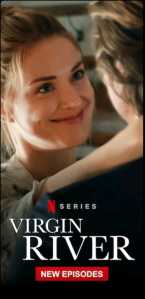
It’s really just a soap opera but it’s so easy to watch! Season three of Virgin River arrived just in time for shingles and a couple of days before my boys got home. The timing couldn’t have been better.
~~***~~
What I’ve been reading:



~~***~~
Until next week… 


July 8, 2021
Behind the Pen with Katherine Brabon
I am delighted to welcome Katherine Brabon to Behind the Pen today, here to chat about her newly released novel, The Shut Ins.

How would you describe this novel if you could only use 5 words?
Loneliness and desire in Japan.
What prompted you to write The Shut Ins?
For me, a book or story often begins with a sort of tone or feeling, and then a character. Back in 2016 when I started the first rough draft, I knew the book had a quiet, lonely feeling about it. And I know this came from the character who was forming, Mai Takeda, who tells the first part of the story. Mai grew up in the city of Nagoya, and the novel is focused around her relationships: with her family, her husband, and an old high school friend Hikaru, who is a hikikomori, sometimes called a recluse or a ‘shut in’ and hasn’t left his house in three years. I had been reading a lot about hikikomori and watching documentaries and interviews, and was interested in exploring a range of different lives and relationships in Japan.
I initially thought I would write the whole novel from Mai’s perspective, but two years in I was really stuck. I had the characters of Hikaru, Sadako and Hiromi, but it wasn’t until one day, feeling a little lost with the book, that I tried to write from Hiromi’s perspective. This seemed right, and the novel is now written from all four perspectives. It’s funny how you think a novel will be a certain way, and then it surprises you.
Can you tell us about your own travels throughout Japan and how this contributed to your research and writing of The Shut Ins.
I first travelled to Japan in 2014. I was with my sister, and we went to visit my friend Nori, who I had met when we were students in England. It was January, the height of winter, and Nori’s family took us into Gifu Prefecture, in the mountains, to stay at an ryokan (an inn) in a town called Takayama. We also stayed in Nagoya, where Nori grew up. We went to the public baths, we enjoyed beautiful home cooked meals.
I was deep into the writing of my first novel (The Memory Artist, set in Russia) and so writing a novel about Japan didn’t occur to me at the time. But I love the way experiences big or small return to me, when the writing process starts. In 2016 I first started sketching out the idea of a character named Mai: she lived in Nagoya but was born in Gifu Prefecture. I now see how these places, and Japan’s seasons, crept into the novel.
I returned to Japan in 2017, in the summer. I was fortunate to get funding from the Australia Council and VicArts to help with the travel costs. Summer in Japan is incredibly humid, particularly down in Nagasaki. I took the bullet trains from Tokyo to Shizuoka (where I stayed with my friend Mio’s parents), then to Hiroshima, Saga (where I stayed in the temple in the photo here), and then to Nagasaki. Again, the seasons of this trip became infused into the novel: summer and winter are very prominent in the tone and mood of the book. I also wrote a journal while I was there, and many parts of that influenced the ‘notes’ sections in the book. These are told from the perspective of a narrator who is me but not quite me.
 Shinobazu Pond, Tokyo in summer, 2017. The Lotus leaves cover the pond in summer, but disappear in winter. Seasonality was a big influence on the book.
Shinobazu Pond, Tokyo in summer, 2017. The Lotus leaves cover the pond in summer, but disappear in winter. Seasonality was a big influence on the book.
 Temple in Saga, 2017. The priest and his wife rent out a room and I stayed one night here on my way to Nagasaki.
Temple in Saga, 2017. The priest and his wife rent out a room and I stayed one night here on my way to Nagasaki.
 Gifu Prefecture, taken from a traditional guesthouse, in winter 2014.
Gifu Prefecture, taken from a traditional guesthouse, in winter 2014.Are there any particular things you routinely do for yourself to maintain your own headspace and replenish your creativity well?
Reading and swimming. If I’m doing these a lot, I feel calm and focused. Lately I often struggle to find time to write, as I work in a few other jobs, so I think carving out time for creativity is important (and something I’m still learning to do).
What book is currently on your bedside table?
I should preface this by saying: I have a tiny bedside table. But I seem to get great comfort from having stacks of books on it! At the moment: No Document by Anwen Crawford, Drop Bear by Evelyn Araluen and Real Estate by Deborah Levy are in my just read or to be read pile.
The Shut InsMai and Hikaru went to school together in the city of Nagoya, until Hikaru disappeared when they were eighteen.
It is not until ten years later, when Mai runs into Hikaru’s mother, Hiromi Sato, that she learns Hikaru has become a hikikomori, a recluse unable to leave his bedroom for years. In secret, Hiromi Sato hires Mai as a ‘rental sister’, to write letters to Hikaru and encourage him to leave his room.
Mai has recently married J, a devoted salaryman with conservative ideas about the kind of wife Mai will be. The renewed contact with her old school friend Hikaru stirs Mai’s feelings of invisibility within her marriage. She is frustrated with her life and knows she will never fulfill J’s obsession with the perfect wife and mother.
What else is there for Mai to do but to disappear herself?
Published by Allen & Unwin
Released July 2021
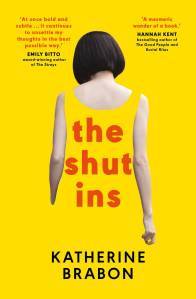
July 6, 2021
Book Review: The Other Side of Beautiful by Kim Lock
Meet Mercy Blain, whose house has just burnt down. Unfortunately for Mercy, this goes beyond the disaster it would be for most people: she hasn’t been outside that house for two years now.
Flung out into the world she’s been studiously ignoring, Mercy goes to the only place she can. Her not-quite-ex-husband Eugene’s house. But it turns out she can’t stay there, either.
And so begins Mercy’s unwilling journey. After the chance purchase of a cult classic campervan (read tiny, old and smelly), with the company of her sausage dog, Wasabi, and a mysterious box of cremated remains, Mercy heads north from Adelaide to Darwin.
On the road, through badly timed breakdowns, gregarious troupes of grey nomads, and run-ins with a rogue adversary, Mercy’s carefully constructed walls start crumbling. But what was Mercy hiding from in her house? And why is Eugene desperate to have her back in the city? They say you can’t run forever…
Published by HQ Fiction AU
Released 7th July 2021
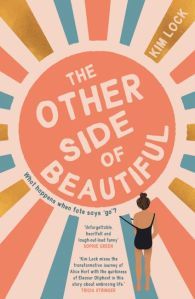 My Thoughts:
My Thoughts:Sometimes a book finds you at the right time and so it was with me and The Other Side of Beautiful. There was so much in this one that I could relate to, on a very deep level, just as there was so much more to Mercy Blain that what appeared on the surface. We meet Mercy Blain as her house is burning down, a significantly traumatic event for anyone. As the story unfolds and we gain insight into how Mercy’s been living and why, we also reach a point where we see just how desperate Mercy was right before her house caught fire. To say my heart hurt in those moments is an understatement.
From the point of crossing the South Australian border, the road trip Mercy takes is one I took myself about 8 years ago. I wasn’t in a clapped out campervan, nor was I alone, and I didn’t have a gorgeous dog with me, but the roads travelled were the same and the landmarks familiar, generating a lot of nostalgia within me. Mercy’s observations of her fellow travellers, the grey nomads, and their travel routines were highly amusing. I could relate to her instinctive refusal of their hospitality but also relished their kindness and persistence in the face of it. Mercy had a fragility about her that was likely apparent to all who met her. She wasn’t a rude person, she just wasn’t in a good place, and those who mattered seemed to recognise that. It’s not easy to put yourself back together after breaking and I loved this novel all the more for intricately demonstrating this.
The Other Side of Beautiful is an exquisite blend of heartache and hope. Life affirming and bittersweet, this novel is like a breath of fresh air. A celebration of the kindness of strangers, taking on life moment by moment, and discovering the beauty of just being present. I loved this novel, in all its glorious pain and pleasure. Remember the name Kim Lock. You’re going to want to read all of her books.





Thanks to the publisher for providing me with a review copy.
July 4, 2021
Blog Tour Book Review: Catch Us The Foxes by Nicola West
Ambitious young journalist Marlowe ‘Lo’ Robertson would do anything to escape the suffocating confines of her small home town. While begrudgingly covering the annual show for the local newspaper, Lo is horrified to discover the mutilated corpse of her best friend – the town’s reigning showgirl, Lily Williams.
Seven strange symbols have been ruthlessly carved into Lily’s back. But when Lo reports her grisly find to the town’s police chief, he makes her promise not to tell anyone about the symbols. Lo obliges, though it’s not like she has much of a choice – after all, he is also her father.
When Lily’s murder makes headlines around the country and the town is invaded by the media, Lo seizes the opportunity to track down the killer and make a name for herself by breaking the biggest story of her life.
What Lo uncovers is that her sleepy home town has been harbouring a deadly secret, one so shocking that it will captivate the entire nation.
Lo’s story will change the course of her life forever, but in a way she could never have dreamed of.
Published by Simon and Schuster Australia
Released 7th July 2021
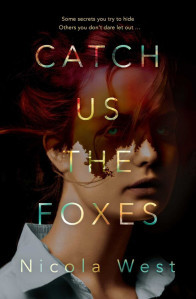 My Thoughts:
My Thoughts:Well. Now this was different. I’ve always been partial to a bit of different from my books, movies and TV series. I really resist formulaic writing, which is why I suspect I don’t get along with certain genres. The author and I have an admiration for Twin Peaks in common; as soon as I read that, I honestly opened my mind up to all possibilities, and it just got better from there.
‘The past few days had taught me what it was like to not be able to trust anyone, but the thought of not being able to trust my own mind was an entirely new concept.’
This story is so twisted that the twists are even twisted. It’s one of those novels where the sands are shifting constantly, you have no idea what’s going on and everything, and I mean EVERYTHING, becomes plausible. There are, in amongst the twists and turns, some pretty heavy themes to unpack and there is a distinct small town oppressive atmosphere permeating the narrative. I really didn’t like the way in which the older men in this town spoke to the young women. There was a patronising gas lighting quality to it that was all too authentic – and I say this as person who grew up in small towns, as well as residing in one for nearly a decade as an adult. They are not all cute cafes and scenic tourist spots – at least, not for the people who live there.
Not much can be elaborated on in terms of the plot because to do so would completely spoil it and therefore make it pointless for you to read it. And read it you should. Because this novel is clever and also the debut of an up-and-coming young Australian woman who I think is in for a big literary future. We need more books like this, ones that break conventional formulas and offer something unique. The way this all pans out might not be everyone’s cup of tea, but I’ll happily drink the whole pot.
Parts of this novel were really scary. No exaggeration. I messaged a friend when I first started reading and told her it was the scariest book I’d read since Silence of the Lambs, and I read that in the 1990s. And yet, I kept on reading – late into the night!
One thing I will leave you with, and you can consider it a key of sorts. After the prologue, there is a title page: The Showgirl’s Secret by Marlowe Robertson. When you get to the end, remember that title page. I did, and I finished with a smile on my face and a feeling that I’d just read the work of someone very talented indeed.




Thanks to the publisher for the review copy and the invitation to participate in the blog tour.
July 3, 2021
The Week That Was…
Lockdowns seem to be happening left, right and centre at the moment, so this week’s joke of the week goes out to all of you in lockdown…
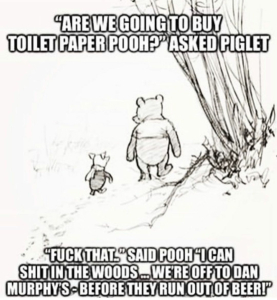
Plus one more, which is more amusing photo than a joke, but it brought a smile to my face:
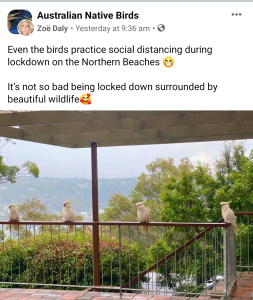
~~~
What I’ve been watching:
The last fortnight, all of my watching has been re-watches. My son wanted to watch Panic again and that was fun because we knew to pay closer attention to certain things the second time around. I’m still on project re-watch Friends, almost at the end of the third season now and still loving it. And then I was overcome by a need to watch Normal People again. Maybe it was on account of seeing Sally Rooney’s new novel coming up in a publicity email, I don’t know, but I loved Normal People the first time around and if possible, loved it even more on the second viewing. My boys are away for the second week of the holidays so I plan on watching a few movies while I am on my own.

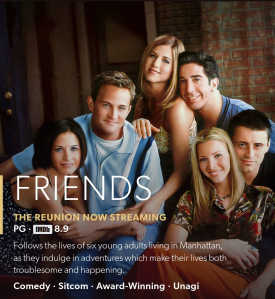
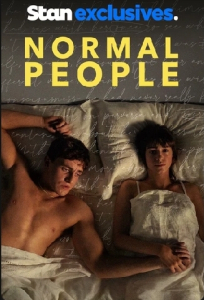
~~~
Highlight of the week:
Exploring our local zoo with my youngest son in our #holidayingathome project. The zoo has been significantly refurbished during our 9 year absence and it’s more like a wildlife sanctuary now. It’s a beautiful environment to wander through and I love how the stories of the rescued animals are available to read as you watch them in their recreated habitats.




~~~
What I’ve been reading:
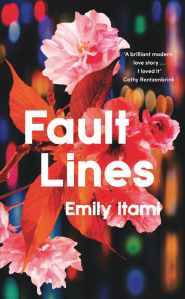
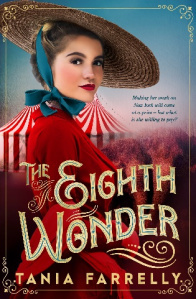


~~~
Until next week… 





